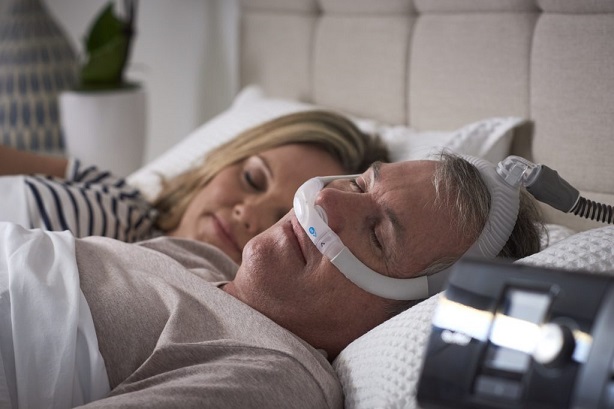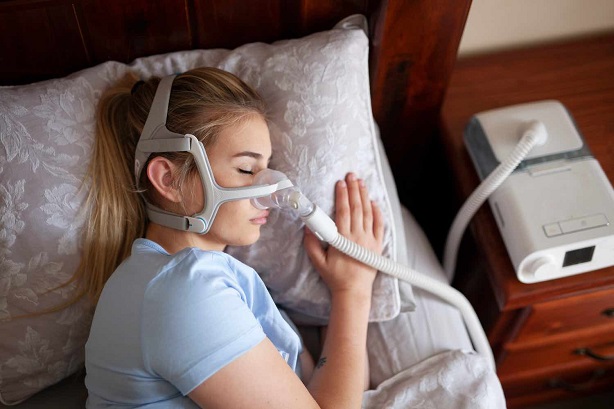The Best Breathing Machines to Treat Your Sleep Apnea Disorder
Sleep apnea is a potentially life-threatening disorder where breathing stops and begins repeatedly. You may have sleep apnea if you snore loudly and are tired even after a whole night’s sleep. Obstructive sleep apnea is the most frequent type of apnea, which happens when the muscles in the throat relax. Central sleep apnea is a condition in which your brain fails to deliver correct signals to the muscles that control your breathing. People with obstructive and central sleep apnea develop complex sleep apnea syndrome, also known as treatment-emergent central sleep apnea.
What Is the Most Effective Treatment for Sleep Apnea?
If you have been diagnosed with sleep apnea, your doctor may offer breathing equipment to help you get the oxygen you need at night. These breathing machines are connected to a mask covering your mouth and nose. They apply pressure to your muscles to help them relax so you can breathe. Positive airway pressure (PAP) therapy is the term used for this type of treatment.
APAP, CPAP, and BiPAP are the three major types of equipment used to treat sleep apnea. We have outlined each type below, so you can work with your doctor to find the best sleep apnea treatment for you.
Automatic Positive Airway Pressure (APAP)

An APAP, also known as an auto-adjustable, auto-titrating CPAP machine, provides adequate airflow to the lungs while allowing you to customize the settings to meet your unique needs. You should first consult with your doctor whether you should use an APAP machine for your obstructive sleep apnea or other serious breathing conditions. The essential feature of an APAP machine is its ability to give the proper quantity of air pressure at the right moment, which is not the case with the other CPAP machines. If you’ve tried various CPAP masks and still have mask leaks, consider getting an APAP.
The APAP machine’s superior option to automatically regulate the air pressure is essential for those who are overweight, have clogged nasal passages due to a cold or allergies, drink alcohol or sedatives before going to bed, and so on. These auto-adjustable machines can give 4-20 cm H2O of customizable air pressure and employ algorithms to make small changes in the patient’s breathing.
The APAP machines have built-in computer software that allows the patient to download the recorded data to a computer. Instead of paying a fortune for monthly doctor visits, you can monitor and alter your air pressure settings and manage your therapy with an appropriate APAP machine.
Continuous Positive Airway Pressure (CPAP)
A CPAP machine consists of a small compressor, flexible tubing, and a mask. The majority of devices are approximately the size of a tissue box, light, and quiet. You can keep it on your nightstand.The tubing connects your mask to your CPAP machine. The tube is long enough for you to flip over or move around in your bed.
The CPAP mask can cover only your nose or both your nose and mouth. Nasal pillows, which fit in your nostrils, are another alternative. It is critical that your mask fits well and is comfortable, regardless of the type. To keep your airway open throughout the night, the mask must form a seal. A good mask seal will keep air leaks at bay while maintaining the proper pressure level.
You will no longer snore or make choking noises in your sleep if you use CPAP every night. You’ll be able to sleep through the night without having to wake up due to a shortage of oxygen. You can prevent or even reverse significant health problems like heart disease and stroke connected to sleep apnea. It’s also possible that your memory and mood will improve. The quality of your sleep will increase, and you will feel more refreshed and aware during the day. Because you will stop snoring, your companion may sleep better as well.
Bi-Level Positive Airway Pressure (BiPAP)

BiPAP machines have two pressure settings: one for inhalation (IPAP) and one for exhalation (lower pressure) (EPAP). Many people find this more comfortable than the single pressure supplied by CPAP equipment. The BiPAP machine is meant to increase the pressure when you inhale to keep the airways in your nose and throat from shutting down while you sleep and to decrease the pressure when you exhale to keep the airway open.
BiPAP machines can be programmed to ensure users breathe at a certain rate per minute. The difference in inhalation and exhalation pressures minimizes breathing effort and allows the patient to have a more restful night’s sleep. These are some reasons why BiPAP machines are occasionally employed as a treatment option when CPAP fails to cure sleep apnea adequately.
Patients who require some breathing aid may benefit from BiPAP as well. Additionally, These breathing machines are the usually better option for patients with congestive heart failure and other significant heart and lung disorders.
APAP, CPAP & BiPAP’s Potential Side Effects
PAP machines can make it difficult to fall and stay asleep, which is one of the most prevalent side effects. Frequent insomnia, like sleep apnea, might put you at risk for metabolic diseases, heart disease, and mood disorders. Other negative effects include runny nose or nasal congestion, sinus infections, dry mouth, dental cavities, bad breath, skin irritation from the mask, bloating and nausea caused by the air pressure in your stomach, as well as germs and infections of unit’s inadequate care.
Positive airway pressure therapy may not be suitable for patients with bullous lung disease, cerebrospinal fluid leaks, frequent nosebleeds, or pneumothorax (collapsed lung).
Which Machine Is Best for You?
You should keep in mind that your requirements determine the use of different breathing machines. Because each person reacts differently to different treatments, follow your sleep physician’s recommendations based on your test and treatment findings. Appropriate testing is necessary to establish which treatment approach and settings work best for you. If you find one type of PAP machine challenging to operate, you can still ask your doctor for a different treatment choice.






